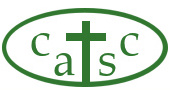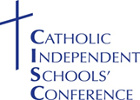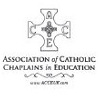

by Peter Boylan, Willie Slavin and John Shoreland
Catholic Education
Our Heritage – Our Future
Introduction
In his apostolic exhortation 'Evangelii
Gaudium,' 'The Joy of the Gospels', Pope
Francis puts 'the new evangelisation' firmly
at the centre of Christian responsibility. He
devotes the final part of his exhortation
to what he calls 'Spirit-filled Evangelisers',
evangelizers fearlessly open to the working
of the Holy Spirit. He speaks of such people
with 'soul' among nurses, teachers and even
politicians; 'people who have chosen deep
down to be with others and for others.' But
he warns, 'once we separate our work from
our private lives, we stop being a people.'
He might have added that, as far as Catholic
schools are concerned,
once we separate our work from our
faith, our work becomes meaningless.
As reported in issue 16/5 of Networking,
Archbishop McMahon spoke of being
'one generation away from the
death of our faith.'
He went on to insist that our contribution
to the Common Good of the Catholic
Education enterprise can be taken
as an aspect of our evangelising
responsibility. The contribution to sharing
an understanding of the purpose and
commitment of our role as Catholic teachers
is a part of that evangelization. Echoing and
reinforcing Pope Francis' call, he highlighted
the need for 'Spirit-filled Evangelisers' within
the Catholic teaching community which is
as great as the need for such people giving
witness externally.
Unless and until those within the
Catholic teaching profession discover
such a vocation within themselves, the
past experience of Catholic Education
in this country, and its rich heritage,
will be forgotten and its future
compromised.
If we are looking into the abyss and are
being forced to confront a truth that has
perhaps been too awful to contemplate,
a considered account of the distinct
contribution of Catholic teachers to that
heritage may offer the most useful starting
point. The twentieth anniversary of the
launch of the Catholic Association of
Teachers, Schools and Colleges (CATSC)
on Friday 22nd April next year offers a
useful focal point, but is worth celebrating
in its own right. Many current teachers in
Catholic schools in this country may be
forgiven for not knowing the motives which
brought this Association into being or
understanding the previous history of the
Catholic teacher bodies. These Associations
trace their origins to the late nineteenth
century when many aspects of provision
were very different, as was the nature of the
local Church.
The Circumstances
Changes in the organisation of Catholic
Education were proposed in the report
of the Bishops Conference working party
entitled 'Servicing Catholic Schools' (1988).
Led by Bishop Lindsay, it recommended
among other elements the formation of a
new 'Catholic Education Service' together
with an Education Council, on which all
organisations working in Catholic Education
should be represented. It sought to ensure
an integrated vision for Catholic education
and for a greater co-operation and coordination
among these various bodies. The
report reflected the changes taking place
within the Church, within state education
and in society generally.
Previously, in the mid-eighties with
the Catholic Education Council (CEC),
the Catholic Committee for In Service,
Evaluation and Appraisal (CCEIA) had been
set up under Bishop Mullins to provide
guidance and development for Catholic
educators. Representatives were drawn from
all sectors of Catholic education.
The Appraisal committee did this work in
anticipation of governmental imposition
of appraisal for schools and teachers.
At the same time, Headteachers from
CCSSC organised roadshows in leadership,
and their retreats for school leaders still
continue. Additionally, representatives
from the Catholic HE Colleges produced
guidelines on Mission and Vision in Catholic
Schools.
The Church was responding to the
second Vatican Council. The decline in
religious vocations, both to the priesthood
and religious life demanded a greater
contribution from Catholic laity, particularly
for theologically informed Catholic lay
educators.
Against a background of social
liberalisation, the economy was moving
rapidly from its industrial base to a less
secure diversification driven by neo-liberal
capitalism, characterised by a drive to an
emphasis on individualism that allowed the
prime minister of the day to claim that 'there
was no such thing as society'.
'The Great Education Reform Act' (1988)
provided for a National Curriculum,
'league tables', financial delegation,
further responsibility for school governors
and finally for schools to become 'Grant
Maintained' free from Local Authority
control. The seeds of the present structures
can be traced to this measure, particualrly
the establishment of OFSTED as a
controlling body with its tentacles reaching
far beyond schools.
At that time there were three Associations
servicing Catholic schools and their teaching
staff. The 'Association of Catholic Schools
and Colleges,' (ACSC) the direct successor
of the 'Conference of Catholic Secondary
Schools and Colleges' (CCSSC) founded
at the invitation of Cardinal Vaughan in
1896. In stages it included in membership
all Headteachers of Catholic Secondary
Schools, widened by the ACSC to include
all Primary Headteachers. The Catholic
Teachers Federation (CTF) founded in 1907,
essentially grew from the elementary Poor
School provision and brought together
local branches to resist Government
changes detrimental to Catholic statefunded
schools. The third grouping was
the Association of Religious in Education,
(ARE) in direct line from the Association
of Convent Schools founded in 1926. ARE
formally disbanded in1996. In addition,
one had also been formed in 1990, for
non-maintained schools, the Catholic
Independent Schools Conference (CISC).
It was the first Director of the new Catholic
Education Service, Albert Price, a former
Headteacher and HMI, who had the task of
building up the recommended structures
when the speed of change demanded
by government legislation was at full tilt.
Detailed demands on curriculum content
and time gave rise to considerable pressure
to reduce Religious Education within the
Curriculum. A number of technicalities
of financial delegation were detrimental
to Voluntary Aided schools and 'open
enrolment.' Open enrolment put the ability
of Catholic schools to allow for a Catholic
entry at serious risk. Grant Maintained
schools created an unwelcome diversion.
Ofsted Inspection reports alongside
'league tables' had a consequential effect
on the schools' ethos. Both initial Teacher
Training and Inset faced new pressures and
additionally, financial provision was being
reduced at a time when greater expenditure
was required.
Through this period and subsequently,
the need for a strong and united voice,
speaking on behalf of the needs of all
Catholic schools became paramount.
The new CES proposed a consultative
structure with three Forums representing
Diocesan Commissions, Religious Advisers
and Catholic Schools (NBRIA). Later a
fourth was added to embrace the newly
legislated circumstances of Sixth Form
Colleges and Higher Education Institutions.
This consultative structure was to feed
into the proposed Education Council or
Co-ordinating Committee whereby all the
interested parties and their expertise would
be equally represented.
Of the initial three forums, the first two
were represented by existing bodies. The
Diocesan Commissioners met regularly; the
Religious Inspectors and Advisers (NBRIA)
had a long-standing role. However, 'Forum
Three' representing Catholic Schools and
Teachers, had three very different groups to
draw upon but geographically there were
dioceses where few of these could be said
to be active. The major task was to establish
a body that could authentically represent
the issues facing Catholic schools on a
national basis.
The Commitment
Following Bishop Lindsay’s Report with its
implied need for such a national grouping,
the CES Director encouraged a union of
these bodies which in itself matched the
thinking of many Committee members of
both the ACSC and the CTF.
On 4th November 1993 at Newman College,
Officers from the CTF and ACSC, agreed
that
"in view of the changing circumstances
in the field of education in this country
and the needs and issues facing Catholic
Teachers, Schools and Colleges and their
work in the mission of the Church," and
committed to the establishment of an
organisation to meet the needs of those
teachers and their schools and colleges.
A Steering Group drawn equally from CTF
and ACSC appointees, under the leadership
of the Chairman of Forum Three, worked
over three years to bring the CATSC into
existence.
The prospectus for the new association was
extensive but realistic. It would be seen to
be a vibrant new organisation. A council,
drawn from regions and interests would
in turn appoint a leadership executive
committee to include the Officers. Interest
committees would cover INSET and
Professional Development, Membership
Services; Research and Development; and
Recruitment. There would be both a simple
newsletter and a reflective professional
journal. Subscriptions based on school
membership were set at a level to provide
the necessary infrastructure including a
remunerated Professional Development
Officer. Such an appointment would ensure
that at a time of over-demanding school
life, the demands of running the association
could be met.
Much of this structure for CATSC and the
CES was in place following the launch
by Cardinal Hume in 1996. For whatever
reason, this bears little resemblance to what
is visible to the naked eye almost twenty
years down the line.
The visionary vibrancy of both the
original prospectus for Catholic
education in England and Wales
and for CATSC has in many ways
been lost.
The Role of Networking
'Networking, Catholic Education Today' has
been produced for much of this period. It
was set up in 1999 to provide the reflective
journal identified by the CATSC Steering
Group. 'Networking Catholic Education
Trust' (NETCET), a not for profit company,
became an independent foundation led by
an editorial of experienced and committed
Catholic educators.
The publication schedule and advertising
were agreed with Bellcourt Ltd, managed
by John Clawson who at that time was
also responsible for a stable of Diocesan
newspapers. An agreement on block
subscriptions with CATSC, the Independent
Schools organisation (CISC), and others was
later extended to Scottish Catholic schools,
assured a level financial viability, but one
that depended upon the generosity of a
board willing to work pro bono.

Where are these children now in early adulthood?
The aim was to provide constituent
organisations with a professional journal
available to their members and include
space for their own identified activities, as
well as to report on the principal events in
their calendars. As a professional journal
serving the distinctive nature of Catholic
schools it included supporting articles on
Religious education and the nature of a
Catholic school in addition to commentary
on secular developments as they might
affect the daily practice of Catholic schools.
An important section celebrated the
individual success of schools and reported
on their various initiatives. CAFOD and
Mission Together became regular editorial
participants.
The important Research and Development
section continues to be led by Prof. Gerald
Grace from the Centre for Research
and Development in Catholic Schools
(CRDCE). The CRDCE had pioneered the
development of a research-based study
of Catholic schools with research projects
and publications on topical issues. This
symbiotic relationship between Networking
and CRDCE remains one of the abiding
strengths of the journal.
NETCET, through its editorial team and
other likeminded collaborators such as
Educarem, has been involved in a variety
of other activities particularly in research,
providing INSET both across the UK and
overseas, advisory work and similar related
initiatives.
Handing on the Baton, 'Spirit-filled Evangelisers required!'
The whole Networking initiative was
intended to be a participatory contribution
to the role and work of the Catholic teacher
organisations in particular with CATSC. A
strong case can still be made for a printed
journal that will allow for an interrogation
of, or reflection on, published articles, many
of which have been reproduced from well
prepared and respected contributions at
conferences. However, various factors, less
advertising revenue, increased printing and
distribution costs, the role of the internet,
e-communications and the social media
must now throw into doubt the ability of the
Catholic educational community to maintain
such a venture.
The role of voluntary contributions has
changed significantly. Many of those on
whom the editorial team has relied in
previous years are approaching their own
sell-by date. Over the last twenty years the
educational architecture has completely
changed. Political opinion trumps evidence
based research and experience; bribery
and coercion are used to impose policy;
educational law has fallen into abeyance;
independence and entrepreneurship
is prized over co-operation; private
sponsorship is encouraged to fill funding
gaps; parents begin to see themselves
as customers not partners. Education
is increasingly interpreted as the route
to better employment rather than the
development of the whole person, a nonnegotiable
principle of Christian education.
The flow of voluntary activity by individuals
in the pressurised school environment,
supported by post-retirement contributions
from experienced professional Catholic
educators has diminished. If dedicated
contributing evangelisers are not emerging,
as the evidence from CATSC and other
bodies seems to suggest, then the gauntlet
thrown down by Archbishop McMahon and
the exhortation of Pope Francis will have
fallen on stony ground.
It is the wish of all those associated with
this journal that the future of our Catholic
schools is supported by a renewed vision
and sense of purpose. If that results in a
decision that the written word has indeed
lost its power and place, so be it. If the
journal is to continue, a freshness of outlook
and support is essential. We are open to
offers and will support the wider
re-envisioning.
Unlike the Lindsey Report which emerged
at a time of great optimism, a renewed
vision fashioned in a less appealing climate
of uncertainty will be closer to the Easter
message of finding renewed strength in our
weakness, power in powerlessness.
A last word to Pope Francis:
"Spirit evangelisers … pray and work.
Mystical notions without a solid social
missionary outreach are of no help to
evangelisation, nor are dissertations
or social or pastoral practices
which lack a spirituality which
can change hearts.
Evangelii Gaudium (262)














